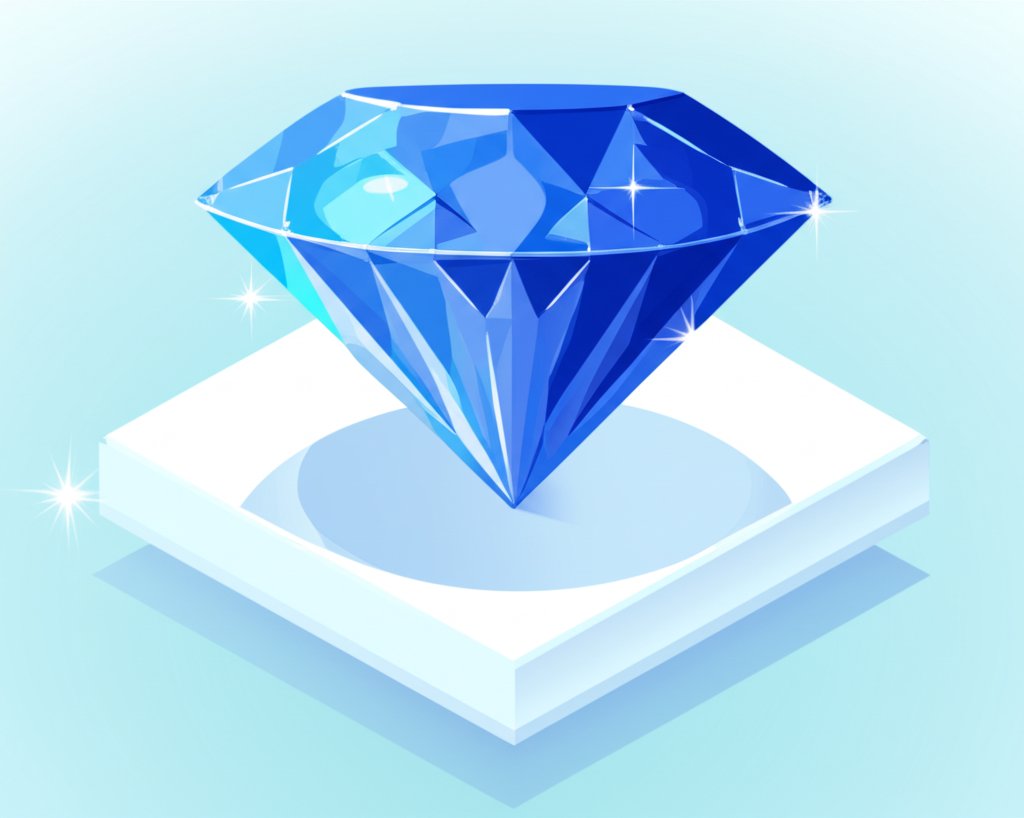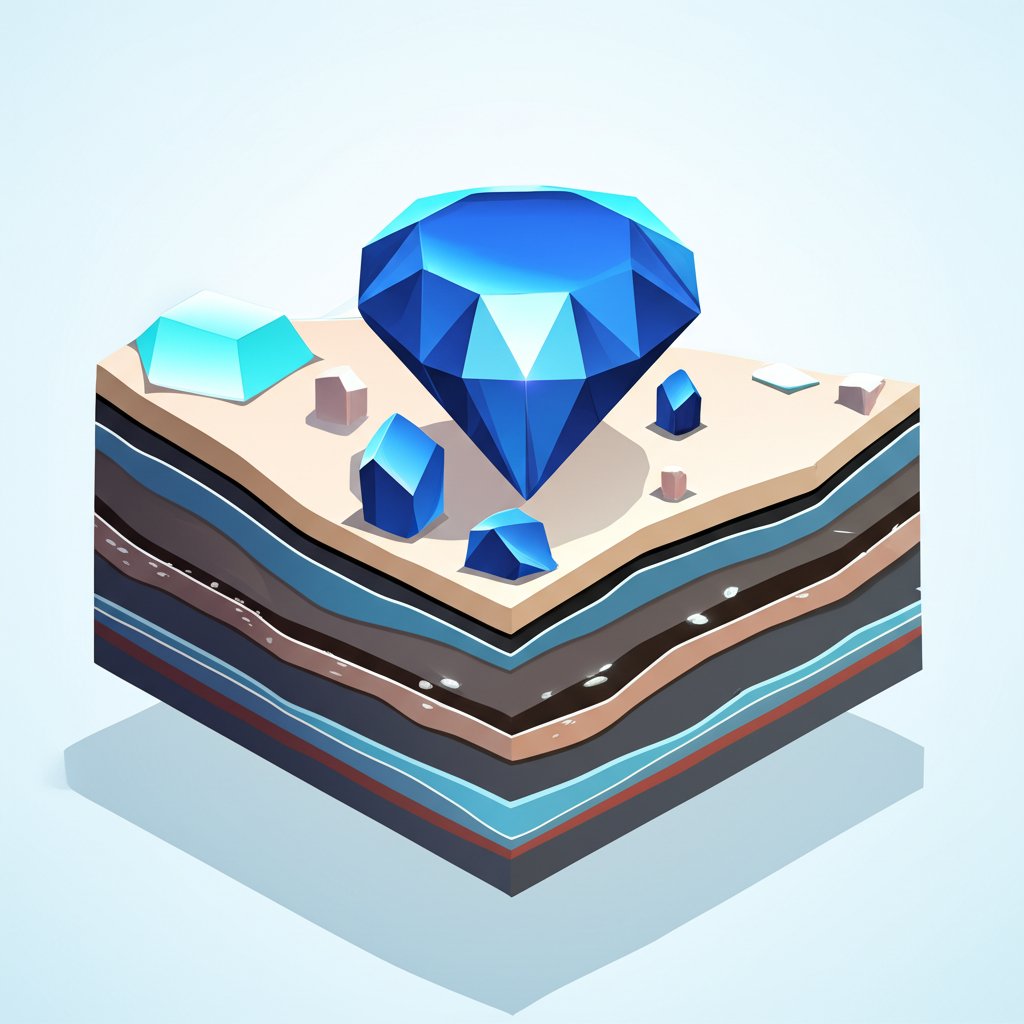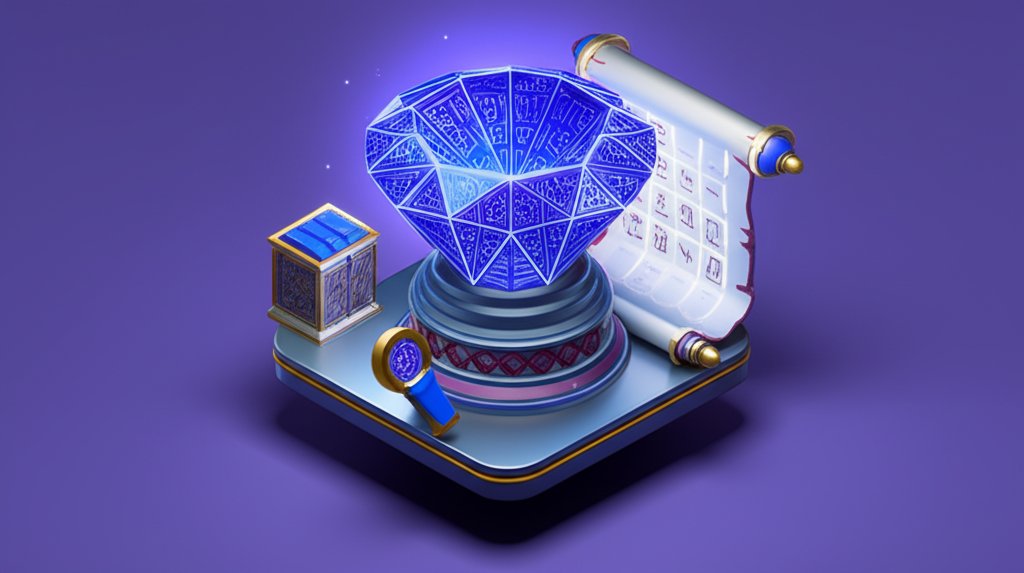Step into the enchanting world of sapphires, where captivating colors meet ancient legends and enduring strength. Far more than just beautiful blue gemstones, these precious gems hold secrets that have fascinated humanity for millennia. If you’ve ever wondered about the true spectrum of their beauty, their origins, or why they’ve graced the jewelry of royalty, you’re about to embark on a thrilling journey of discovery.
Prepare to uncover an array of dazzling sapphire fun facts that will transform your appreciation for these remarkable treasures. From the vibrant hues beyond the classic blue to their incredible durability and rich historical significance, we’re diving deep into what makes sapphires truly exceptional among all precious gems. Get ready to be captivated!
Beyond Blue: The Kaleidoscope of Sapphire Colors
When most people think of a sapphire, a vivid, deep blue instantly comes to mind. While the classic blue sapphire is undeniably iconic, it’s just one facet of these incredibly diverse gemstones. The truth is, sapphires boast a stunning rainbow of colors, often referred to as “fancy sapphires,” making them one of the most versatile and beautiful precious gems available.
The Chemical Secret Behind the Rainbow
All natural sapphires are a variety of the mineral corundum, which is crystalline aluminum oxide. In its purest form, corundum is colorless. It’s the presence of tiny trace elements within the crystal structure during formation that gives sapphires their breathtaking array of colors.
- Blue Sapphires: The iconic blue hue comes from the presence of both iron and titanium. The specific proportions and arrangement of these elements dictate the intensity and shade of the blue, from light sky blue to deep, inky indigo.
- Yellow Sapphires: Iron is the primary culprit behind the cheerful yellow tones, with higher iron concentrations leading to more vibrant golden hues.
- Green Sapphires: These also derive their color from iron, but in different amounts or oxidation states than yellow sapphires, sometimes with a hint of titanium.
- Purple Sapphires: A fascinating blend of iron, titanium, and chromium creates the alluring purple shades, ranging from delicate lavender to rich violet.
- Orange Sapphires: Chromium and iron combine to produce the bright, fiery orange spectrum found in some sapphires.
- Pink Sapphires: The delicate to intense pink shades are predominantly due to the presence of chromium, similar to what gives rubies their red color (rubies are also corundum, but red due to higher chromium content).
- White Sapphires: These are pure aluminum oxide, lacking the trace elements that give other sapphires their color, making them clear and sparkling, often used as diamond alternatives.
- Black Sapphires: Dark and sometimes opaque, black sapphires get their color from high concentrations of iron and titanium. Some can even exhibit asterism, a star-like pattern.
- Teal Sapphires: A beautiful blend of blue and green, often with subtle yellow undertones, resulting from specific iron and titanium interactions.
- Bicolor Sapphires: Truly unique, these gemstones display two or more distinct colors within the same stone, a testament to varying trace element concentrations during their growth.
Rarities and Wonders: Padparadscha, Star Sapphires, and Color-Change Gems
Beyond the standard palette, some sapphires exhibit truly extraordinary phenomena, cementing their status as some of the most fascinating precious gems:
- Padparadscha Sapphires: Considered one of the rarest and most coveted sapphires, the Padparadscha boasts a unique, delicate blend of pink and orange, reminiscent of a lotus flower at sunset. Its name, derived from the Sinhalese word for “lotus blossom,” perfectly captures its ethereal beauty. Achieving this specific hue requires a precise balance of chromium and iron.
- Star Sapphires: These magical sapphires display a phenomenon called asterism—a star-like effect that appears to glide across the gemstone’s surface when illuminated. This “star” is caused by inclusions of tiny, needle-like rutile crystals (titanium dioxide) aligned in specific directions within the sapphire. The most common are six-rayed stars, but twelve-rayed stars can also occur.
- Color-Changing Sapphires: Perhaps one of the most astonishing sapphire fun facts is that some sapphires can actually change color! Depending on the type of light source (daylight vs. incandescent light), these gems can shift from blue to purple, or even green to reddish-brown. This rare optical illusion is due to the way the sapphire absorbs certain wavelengths of light.
Sapphires’ Unyielding Strength: A Gemstone Built to Last
Beyond their captivating beauty, one of the most practical and appealing sapphire fun facts is their exceptional durability. When considering precious gems for everyday wear, a sapphire stands out as an incredibly robust choice, second only to one other well-known stone.
Ranking on the Mohs Scale: Unrivaled Hardness
The Mohs scale of mineral hardness, developed by German mineralogist Friedrich Mohs in 1812, ranks minerals from 1 (softest) to 10 (hardest) based on their resistance to scratching. Sapphires proudly sit at an impressive 9 on the Mohs scale.
To put this in perspective:
- Diamonds, the hardest known natural substance, rank a perfect 10.
- Rubies, also a variety of corundum, share the same 9 rating as sapphires.
- Common materials like steel are around 6-7, and quartz (found in dust and sand) is 7.
This high ranking means sapphires are incredibly resistant to scratching from almost any everyday material. They can withstand significant wear and tear, making them ideal for jewelry that is worn frequently, such as engagement rings, wedding bands, and bracelets.
Why Durability Matters: Everyday Wear and Legacy
The remarkable hardness of sapphires is a key reason they are such cherished precious gems.
- Everyday Jewelry: For pieces exposed to daily activities, a durable gemstone is essential. A sapphire is far less likely to show signs of wear, maintaining its polished surface and dazzling brilliance over time. This makes sapphires a wise investment for items meant to be worn constantly.
- Heirloom Potential: Thanks to their resilience, sapphires are perfect for creating family heirlooms. A sapphire engagement ring or pendant can be passed down through generations, retaining its beauty and integrity, carrying stories and memories for centuries. This inherent longevity adds to their value as truly precious gems.
- Industrial Applications: This might be a surprising addition to our sapphire fun facts, but the same durability that makes sapphires excellent for jewelry also makes them valuable in industrial applications. Synthetic sapphires are used in scratch-resistant windows for watches, smartphones, and even spacecraft, as well as in high-durability optical components.
A Royal Legacy: Sapphires Through History and Culture
Few gemstones can rival the rich tapestry of history and symbolism woven around sapphires. For thousands of years, these magnificent precious gems have been revered by various cultures, adorning royalty, spiritual leaders, and the elite, embodying profound meanings.
Symbols of Wisdom, Truth, and Nobility
Across ancient civilizations, sapphires were believed to possess extraordinary powers and virtues:
- Ancient Persians: Legend has it that the Earth rested on a giant sapphire, and its reflection painted the sky blue. They believed sapphires brought wisdom and health.
- Ancient Greeks and Romans: They associated sapphires with Apollo, the god of prophecy, and believed that wearing the stone would bring guidance, protection from envy, and divine favor.
- Medieval Europe: Clergy members often wore sapphires as a symbol of heaven, purity, and holiness. They were thought to protect against evil and poison, and to bring peace and good health.
- Hinduism and Buddhism: In these traditions, sapphires are associated with spirituality, enlightenment, and the third eye chakra, believed to enhance intuition and spiritual awareness.
These enduring beliefs highlight the deep respect and mystical allure that sapphires have commanded throughout human history, solidifying their status as more than just beautiful stones, but as powerful talismans.
Crowns, Scepters, and Iconic Jewels
The association of sapphires with royalty and influence is one of the most captivating sapphire fun facts. Their deep blue color, reminiscent of the heavens, made them a natural choice for those who claimed divine right to rule.
- British Crown Jewels: Numerous sapphires are embedded in the British Crown Jewels, including the magnificent “St. Edward’s Sapphire” and the “Stuart Sapphire,” testifying to centuries of royal patronage. These precious gems are synonymous with the monarchy’s power and continuity.
- The Queen Mary’s Russian Sapphire Brooch: A breathtaking example of a large, beautiful sapphire set in an elaborate brooch, showcasing its grandeur.
- Princess Diana’s Engagement Ring: Perhaps the most famous sapphire in modern history is the oval 12-carat Ceylon sapphire surrounded by diamonds, given by Prince Charles to Lady Diana Spencer in 1981. This ring, now famously worn by Catherine, Princess of Wales, single-handedly boosted the popularity of blue sapphires globally and remains an enduring symbol of love, elegance, and continuity.
- Emperor Napoleon Bonaparte’s Sapphire Engagement Ring: While less known, Napoleon famously gave Josephine de Beauharnais a sapphire and diamond “toi et moi” (you and me) ring, another testament to the stone’s romantic appeal.
These examples underscore the timeless appeal and regal importance of sapphires as truly magnificent precious gems.
Sapphires as September’s Birthstone
For those born in September, the sapphire is their designated birthstone, adding another layer of personal significance to these already special gemstones. As a birthstone, the sapphire is said to symbolize loyalty, truth, sincerity, and integrity. This connection makes sapphires a popular and meaningful gift for September birthdays, anniversaries, or special milestones, reinforcing their role in personal celebrations.
Where Do Sapphires Come From? Global Origins of Precious Gems

The journey of a sapphire from deep within the Earth to a dazzling piece of jewelry is as fascinating as the gemstone itself. Understanding their geological origins adds another intriguing layer to our sapphire fun facts.
Major Mining Locations: A Global Treasure Hunt
Sapphires are found in various localities around the world, with each source often producing stones with distinct characteristics, colors, and qualities.
- Sri Lanka (Ceylon): Historically one of the most important sources, Sri Lanka is renowned for producing a wide range of sapphire colors, including beautiful blues, pinks, yellows, and particularly the highly prized Padparadscha sapphires. Many of the grand sapphires found in historical jewelry originated from Ceylon.
- Madagascar: This island nation is a more recent but incredibly significant source, discovered in the late 20th century. Madagascar yields a vast quantity of sapphires in many colors, including fine blue and pink varieties, often rivaling those from traditional locations.
- Australia: Known for its darker, inky blue sapphires as well as green and yellow varieties. Australian sapphires were particularly prominent in the late 19th and early 20th centuries.
- Kashmir, India: Historically celebrated for producing the most velvety, intensely saturated blue sapphires with a unique “sleepy” quality, these “Kashmir sapphires” are exceedingly rare and among the most valuable precious gems in the world. Their mines have largely been depleted.
- Montana, USA (Yogo Sapphires): The Yogo Gulch in Montana is famous for producing highly prized, naturally brilliant, cornflower-blue sapphires that require no heat treatment. These stones are known for their exceptional clarity and vibrant color, making them unique among sapphires.
- Myanmar (Burma): While more famous for its rubies, Myanmar also produces high-quality sapphires, sometimes displaying a particularly rich, deep blue.
- Thailand, Cambodia, Vietnam: These Southeast Asian countries are also notable sources, often producing heat-treated sapphires that bring out their best colors.
From Mine to Masterpiece: The Journey of a Sapphire
The extraction and preparation of sapphires are complex processes:
- Mining: Sapphires are typically found in alluvial deposits (riverbeds) or primary deposits within igneous or metamorphic rock formations. Mining methods range from traditional hand-digging in small-scale operations to modern, mechanized techniques.
- Rough Stone Sorting: Once extracted, the rough sapphire crystals are carefully sorted, cleaned, and evaluated for color, clarity, and size.
- Treatment (Often): One of the important sapphire fun facts to note is that many sapphires undergo heat treatment. This is a widely accepted and permanent process that enhances or improves a gemstone’s color and/or clarity. It mimics natural geological processes and is used on the vast majority of sapphires on the market. Only a small percentage of sapphires, like those from Yogo, are considered untreated.
- Cutting and Polishing: Skilled lapidaries cut the rough sapphires to maximize their brilliance and color while minimizing inclusions. The cut greatly influences how light interacts with the gemstone and how beautiful it appears.
- Setting: Finally, the cut and polished sapphires are set into various jewelry pieces, ready to be admired and treasured.
This intricate journey underscores the rarity and effort involved in bringing these magnificent gemstones to light.
Caring for Your Sapphires: Tips for Lasting Brilliance
While sapphires are known for their exceptional hardness, proper care is essential to ensure these precious gems maintain their dazzling brilliance and beauty for generations. Integrating basic care into your routine will protect your investment and keep your sapphires looking their best.
Cleaning and Maintenance
Regular, gentle cleaning will prevent buildup and keep your sapphires sparkling:
- Warm Soapy Water: The safest and most effective method for cleaning sapphires at home is with warm water, mild dish soap, and a soft brush (like a toothbrush). Gently scrub the gemstone and its setting, paying attention to the underside where dirt often accumulates.
- Rinse Thoroughly: After scrubbing, rinse the sapphire under clean running water to remove all soap residue.
- Dry Softly: Pat dry with a lint-free cloth or allow it to air dry.
- Avoid Harsh Chemicals: Do not expose your sapphires to harsh chemicals such as bleach, chlorine, or abrasive cleaners. These can potentially damage the metal setting or, in rare cases, affect certain treated sapphires.
- Professional Cleaning: Consider having your sapphire jewelry professionally cleaned and inspected by a jeweler periodically (e.g., once a year). They can check for loose settings and address any deeper cleaning needs. While ultrasonic cleaners are generally safe for untreated sapphires, it’s best to consult a professional, especially for stones with fractures or specific treatments.
Protecting Your Precious Investment
Beyond cleaning, mindful handling and storage are crucial for preserving your sapphires:
- Separate Storage: Store sapphire jewelry separately from other gemstones and metal jewelry. While sapphires are hard, they can scratch softer stones (like emeralds or opals) and metal settings. Use individual pouches, compartments in a jewelry box, or soft cloth wraps.
- Remove During Activities: Take off your sapphire rings, bracelets, and pendants before engaging in activities that could expose them to hard impacts or harsh chemicals, such as gardening, cleaning, strenuous exercise, or sports. While durable, a strong, direct blow can chip or fracture any gemstone.
- Protect from Extreme Temperatures: Rapid and extreme temperature changes can sometimes cause damage, particularly to sapphires with existing inclusions or fractures. Avoid exposing your sapphires to sudden thermal shocks.
- Regular Inspection: Periodically check your sapphire jewelry for any loose prongs or signs of wear on the setting. Addressing these issues promptly can prevent the loss of your precious gemstone.
By following these simple guidelines, your sapphires will continue to radiate their dazzling beauty for a lifetime and beyond, truly embodying their status as enduring precious gems.
Conclusion

From the deepest blues of the ocean to the fiery reds of a sunset, and all the colors in between, sapphires are truly a marvel of nature. We’ve journeyed through a captivating world of sapphire fun facts, discovering that these precious gems are far more than just beautiful adornments. Their incredible spectrum of colors, thanks to microscopic trace elements, transforms them into a living kaleidoscope. Their unparalleled durability, ranking 9 on the Mohs scale, ensures they stand the test of time, becoming cherished heirlooms that tell stories for generations.
We’ve explored their rich tapestry of history, seeing how sapphires have been symbols of wisdom, truth, and royalty, gracing the crowns of monarchs and the iconic rings of princesses. We’ve also peeked into their origins, understanding the global quest that brings these magnificent gemstones from mine to masterpiece.
Whether you’re drawn to a classic blue sapphire, a rare Padparadscha, or a mesmerizing color-change gem, each sapphire holds a unique story and an undeniable allure. As you embrace the magic of these dazzling precious gems, remember their depth, their strength, and their timeless charm. Let the knowledge of these sapphire fun facts deepen your appreciation for one of Earth’s most spectacular treasures.
FAQ Section
Q1: Can sapphires be found in colors other than blue?
Absolutely! This is one of the most exciting sapphire fun facts. While blue is the most famous, sapphires naturally occur in almost every color of the rainbow, including pink, yellow, green, purple, orange, black, white (colorless), teal, and even two colors within the same stone (bicolor). These non-blue varieties are often referred to as “fancy sapphires.”
Q2: How durable are sapphires compared to other gemstones?
Sapphires are exceptionally durable. They rank an impressive 9 on the Mohs scale of mineral hardness, making them the second hardest natural gemstone after diamonds (which rank 10). This high level of hardness means they are highly resistant to scratches and chips, making them an excellent choice for everyday wear jewelry like engagement rings.
Q3: What makes a sapphire a “precious gem”?
Sapphires are considered precious gems due to a combination of factors: their rarity, exceptional hardness (durability), beauty (color and brilliance), and historical significance. Along with diamonds, rubies, and emeralds, they are traditionally classified as one of the four precious gemstones, setting them apart from semi-precious varieties.
Q4: What are some famous sapphires in history?
The most famous sapphire in modern history is undoubtedly the 12-carat oval Ceylon sapphire engagement ring of Princess Diana, now worn by Catherine, the Princess of Wales. Other notable sapphires include the “Star of India” (a magnificent star sapphire), the “Logan Sapphire” (one of the largest faceted blue sapphires), and several important sapphires within the British Crown Jewels.
Q5: Where are sapphires typically sourced from around the world?
Major sources of sapphires include Sri Lanka (Ceylon), Madagascar, Australia, and parts of Southeast Asia like Thailand and Cambodia. Historically, Kashmir (India) was renowned for its exceptionally fine blue sapphires, and Montana (USA) is known for its beautiful, untreated Yogo sapphires.
Q6: Are all sapphires natural, or are they treated?
Sapphires are natural gemstones that are mined from the Earth. However, it’s a common sapphire fun fact that the vast majority (over 90%) of sapphires on the market today undergo a heat treatment process. This process, which mimics natural geological heating, is widely accepted in the jewelry industry and is used to enhance or improve a sapphire’s color and/or clarity. Untreated sapphires with excellent color and clarity are rare and typically command higher prices.
Q7: What is a Padparadscha sapphire?
A Padparadscha sapphire is a rare and highly sought-after type of fancy sapphire that exhibits a unique and delicate blend of pink and orange hues, often described as similar to a lotus blossom at sunset. Its name comes from the Sinhalese word for “lotus flower” and it is considered one of the most precious and beautiful color variants of sapphire.
Q8: What is a “star sapphire”?
A star sapphire is a type of sapphire that displays a phenomenon called asterism. This is a six-rayed (sometimes twelve-rayed) star-like pattern that appears to float across the surface of the gemstone when illuminated by a single light source. This optical effect is caused by reflections from tiny, needle-like mineral inclusions (typically rutile) aligned within the sapphire’s crystal structure.










